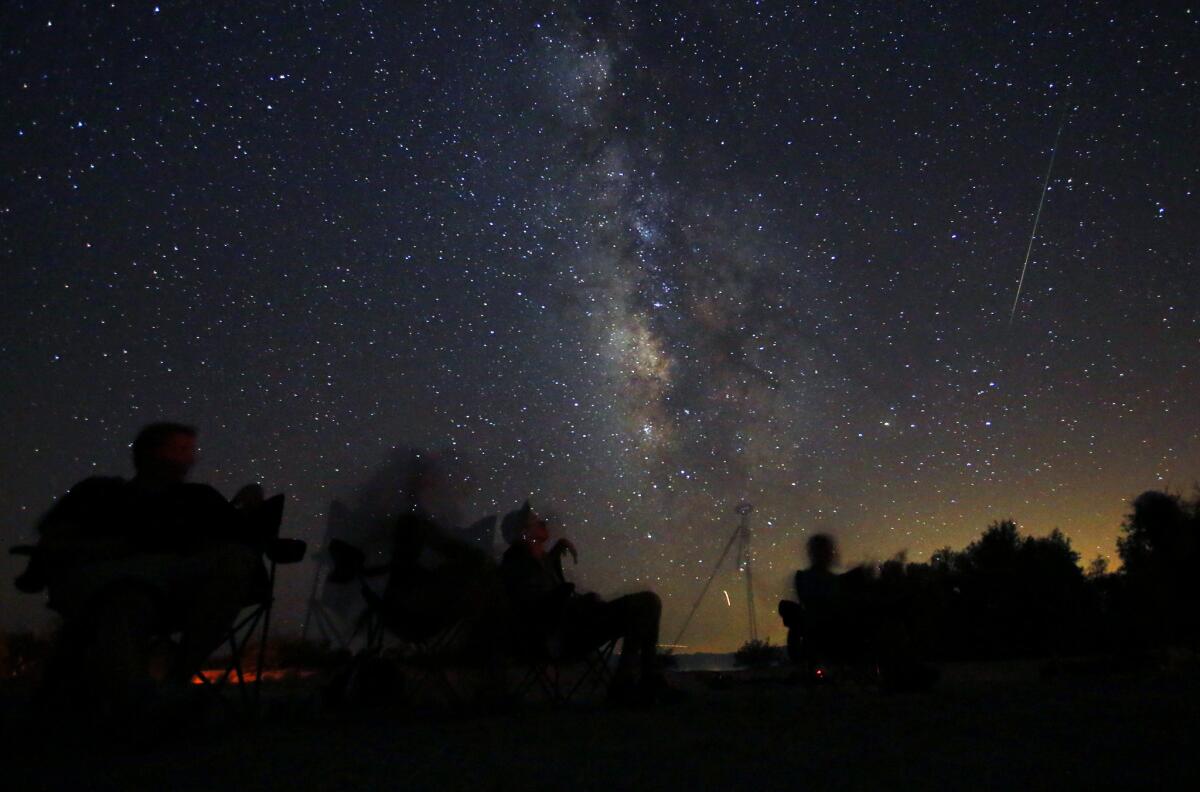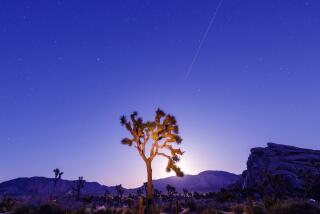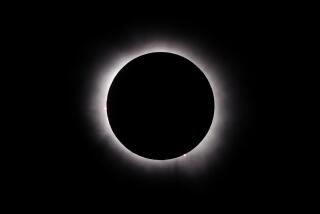Prolific Geminid meteor shower peaks Saturday night: Watch it live!

Grab your hot chocolate and your lounge chair -- the Geminid meteor shower will peak on Saturday evening and you don’t want to miss it.
The annual Geminid meteor shower is one of the best of the year, delivering as many as 120 meteors per hour.
“As far as rates ... go, it’s much better than the Perseids,” said Bill Cooke of NASA’s Meteoroid Environment Environment Office. “If you can stand the cold.”
The Geminids occur when Earth passes through a stream of dust and small rocks that lie in the orbital path of a mystery object called Phaethon 3200. These bits of debris burn up in our atmosphere, causing shooting stars to streak across the sky.
Some scientists believe Phaethon is an asteroid; others think it is an extinct comet that burned through all its volatile gases centuries ago.
“A lot of scientists will tell you that because of the orbit it’s on it was never a comet,” Cooke said. “It depends on who you ask.”
If Phaethon is an asteroid, then it is not entirely clear where the meteor-making debris originated. Active comets leave trails of dust, but asteroids do not.
One hypothesis is that Phaethon was a larger asteroid that broke apart thousands of years ago. The dust that causes meteors to appear in our skies might be the result of a collision that caused the asteroid to break into smaller pieces.
No matter where you live, the best time to see the meteor shower is between midnight and dawn, according to Tony Phillips, who runs SpaceWeather.com.
Despite the recent rain storms in California, Accuweather.com is predicting that viewing conditions will be fair to good for Southern California. The best viewing will be in the southeastern United States where a high-pressure system will keep the skies clear.
Like all meteor showers, this one is best observed in the darkest skies you can find. You should plan to spend a considerable amount of time looking at the sky: Seasoned sky watchers say it takes about 20 minutes for your eyes to adjust to the dark. Also, try to avoid peeking at your cellphone or any other source of light.
If you prefer to do your sky watching from the comfort of the indoors, you can view the meteor shower online. At 5 p.m. Pacific time Slooh.com will be hosting a live feed of the Geminids from around the world.
NASA will also host a live stream of the shower from a telescope at Marshall Space Flight Center in Huntsville, Ala. In addition, Cooke and his colleagues will be available to answer questions about the Geminids from 8 p.m. to midnight Pacific time via a webchat.
Happy viewing!
Science rules! Follow me @DeborahNetburn and “like” Los Angeles Times Science & Health on Facebook.







